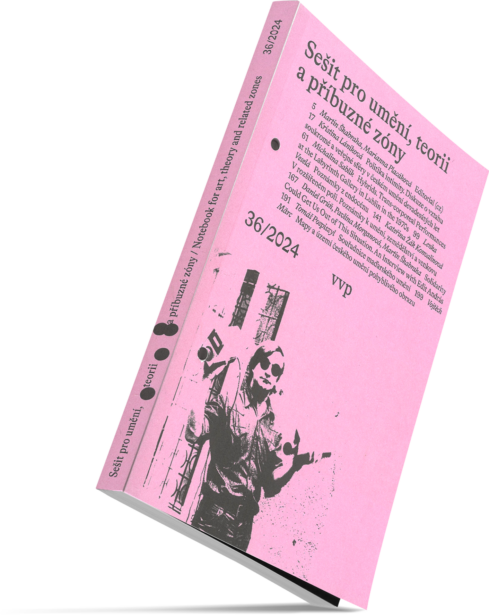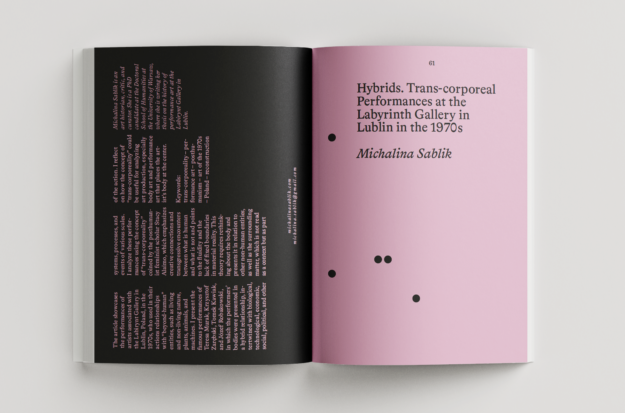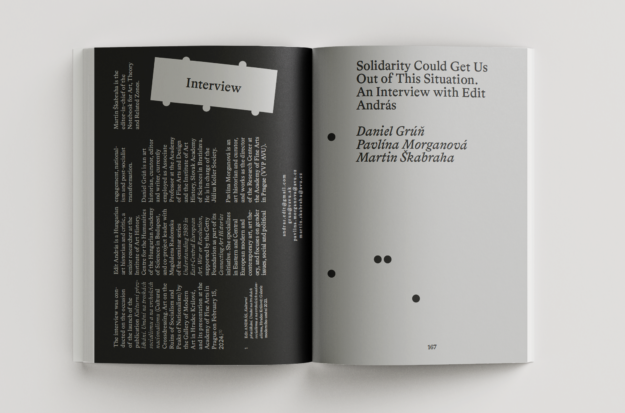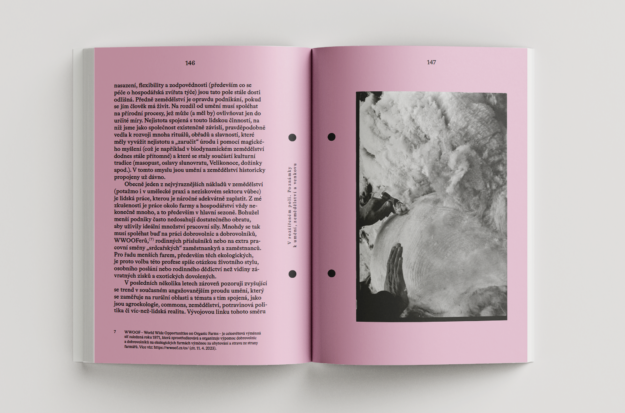The 36th issue of Notebook for Art, Theory and Related Zones contains a profusion of genres and themes. It includes three peer-reviewed studies, an essay, an interview, and two reviews. In the first text, entitled The Politics of Intimacy: A Discussion on the Relationship between Private and Public Spheres in Czech Art of the 1990s, Kristina Láníková looks what specific elements the reception of second-wave feminism may have encountered in Czechia. While women artists in the West were motivated by the principle that “the personal is political”, in Czech art of the early 1990s, intimacy, on the contrary, became a tool for the de-politicisation of the personal. In an essay written in English entitled Hybrids: Trans-corporeal Performances at the Labyrinth Gallery in Lublin in the 1970s, Polish scholar Michalina Sablik examines selected performances by Polish artists, who as early as the 1970s were relativising the boundaries between the human body and more-than-human beings or technical apparatuses. An even more radical interrogation of the boundary between one’s own body and its environment is offered by Lenka Veselá in Notes from the Endocene. Veselá introduces a new concept in order to capture how moods and emotions are increasingly influenced by biochemically manipulated hormonal processes that are the product of the pharmaceutical industry. The essay Within an Extended Field: Notes on Art, Agriculture and the Rural by Kateřina Konvalinová Žáková compares the author’s experiences at the Jednorožec community and organic farm in Central Bohemia and the Inland project in Asturias, Spain, which is based on the link between agro-ecological farming and contemporary art practice.
This February, the Hungarian art historian Edit András visited AVU. In an English-language interview, which we conducted to mark the launch of her first book translated into Czech, András offers her thoughts regarding the cultural policies of the Viktor Orbán regime. In contemporary Hungary, the authoritarian legacy of state socialism intersects with new methods of surveillance and power hegemony, including the use of commercial interests and incentives for political ends. The book, a translation of Cultural Cross Dressing: Art in the Ruins of Socialism (Hradec Králové: Galerie moderního umění 2023), is reviewed by Tomáš Pospiszyl, who argues that it could inspire a scholarly publication on the history of Czech art after 1989. This issue’s final text is another review, in which Vojtěch Märc discusses the anthology Mapování pohyblivého obrazu: Média, aktéři a místa v českém prostředí / Mapping the Moving Image: Media, Agents and Sites in the Czech Context (Praha: Národní filmový archiv 2023), edited by Martin Mazanec and Sylva Poláková. Here, too, we encounter reflections upon a certain hybridisation, this time in relation to the medium of the moving image.
Content
Kristina Láníková
The Politics of Intimacy. Discussion on the Relationship between Private and Public Spheres in the Czech Art of the 1990s
In the text, I focus on the changes in the perception of the relationship between the categories of private and public, and personal and social/political, as revealed in the period discussion of the concept of intimacy in Czech visual art practices after 1989. I wil reconstruct the discussion that arose in response to the exhibition Nová intimita (New Intimacy), curated by Milena Slavická in 1991, and attempt to outline the various approaches to the concept of intimacy in the Czech art of the early 1990s. The aim of this text is to present the thesis that the concept of intimacy took a role in the process of depoliticizing the artwork and, since the relationhisp between the private and the public was not seen from the feminst perspective, it also influenced the depoliticization of the private sphere in the art scene.
Michalina Sablik
Hybrids. Trans-corporeal Performances at the Labyrinth Gallery in Lublin in the 1970s
The article showcases the performances of artists associated with the Labirynt Gallery in Lublin, Poland, in the 1970s, who used in their actions relationships with “beyond-human” entities, such as living and non-living nature, plants, animals, and machines. I present the famous performances of Teresa Murak, Krzysztof Zarębski, Tomek Kawiak, and Józef Robakowski, in which the performers’ bodies were presented in a hybrid relationship, intertwined with biological, technological, economic, social, political, and other systems, processes, and events of various scales. I analyze these performances using the concept of “trans-corporeality” coined by the posthumanist feminist scholar Stacy Alaimo, which emphasizes creative connections and transgressive encounters between what is human and what is not and points to the fluidity and the lack of fixed boundaries in material reality. This theory requires rethinking about the body and presents it in relation to other non-human entities, as well as the surrounding matter, which is not read as a context but as part of the action. I reflect on how the concept of “trans-corporeality” could be useful for analyzing art production, especially body art and performance art that places the artist’s body at the center.
Lenka Veselá
Notes from the Endocene
The Endocene, derived from the prefix endo- (the Greek endon means inner or inside), transcends conventional geological perspectives to reflect on our entangled relationship with the environment. The Endocene redirects our attention to the micro-scale of our cells and molecules altered by industrial chemicals. With an emphasis on involuntary chronic exposure to endocrine disrupting chemicals affecting neurodevelopment and brain function, the Endocene examines the shifting physiology of our perception, cognition, and emotional experiences. What do our feelings, caused and modulated by anthropogenic compounds, tell us about our synthetic becoming in the Endocene? What are the critical and political potentials of thinking with and acting upon these emotions? Using artistic research methods and drawing on visual culture studies and environmental humanities, this paper examines the intricate interplay between anthropogenic action and the biosphere, providing a critical lens through which to grasp the profound implications of industrialization on biological and emotional landscapes.
Kateřina Žák Konvalinová
Within an Extended Field. Notes on Art, Agriculture and the Rural
The essay compares the author’s experiences at the Jednorožec community and organic farm in Central Bohemia and the Inland project in Asturias, Spain, which is based on the link between agro-ecological farming and contemporary art practice.
Daniel Grúň, Pavlína Morganová, Martin Škabraha
Solidarity Could Get Us Out of This Situation. An Interview with Edit András
This February, the Hungarian art historian Edit András visited AVU. In an English-language interview, which we conducted to mark the launch of her first book translated into Czech, András offers her thoughts regarding the cultural policies of the Viktor Orbán regime. In contemporary Hungary, the authoritarian legacy of state socialism intersects with new methods of surveillance and power hegemony, including the use of commercial interests and incentives for political ends.
Tomáš Pospiszyl
Coordinates of Hungarian Art
The review of the book Edit András: Kulturní převlékání. Umění na troskách socialismu a na vrcholcích nacionalismu / Cultural Cross Dressing: Art in the Ruins of Socialism (Hradec Králové: Galerie moderního umění 2023).
Vojtěch Märc
Maps and Territories of the Czech Moving Image
The review of the anthology Mapování pohyblivého obrazu: Média, aktéři a místa v českém prostředí / Mapping the Moving Image: Media, Agents and Sites in the Czech Context (Praha: Národní filmový archiv 2023), edited by Martin Mazanec and Sylva Poláková.



